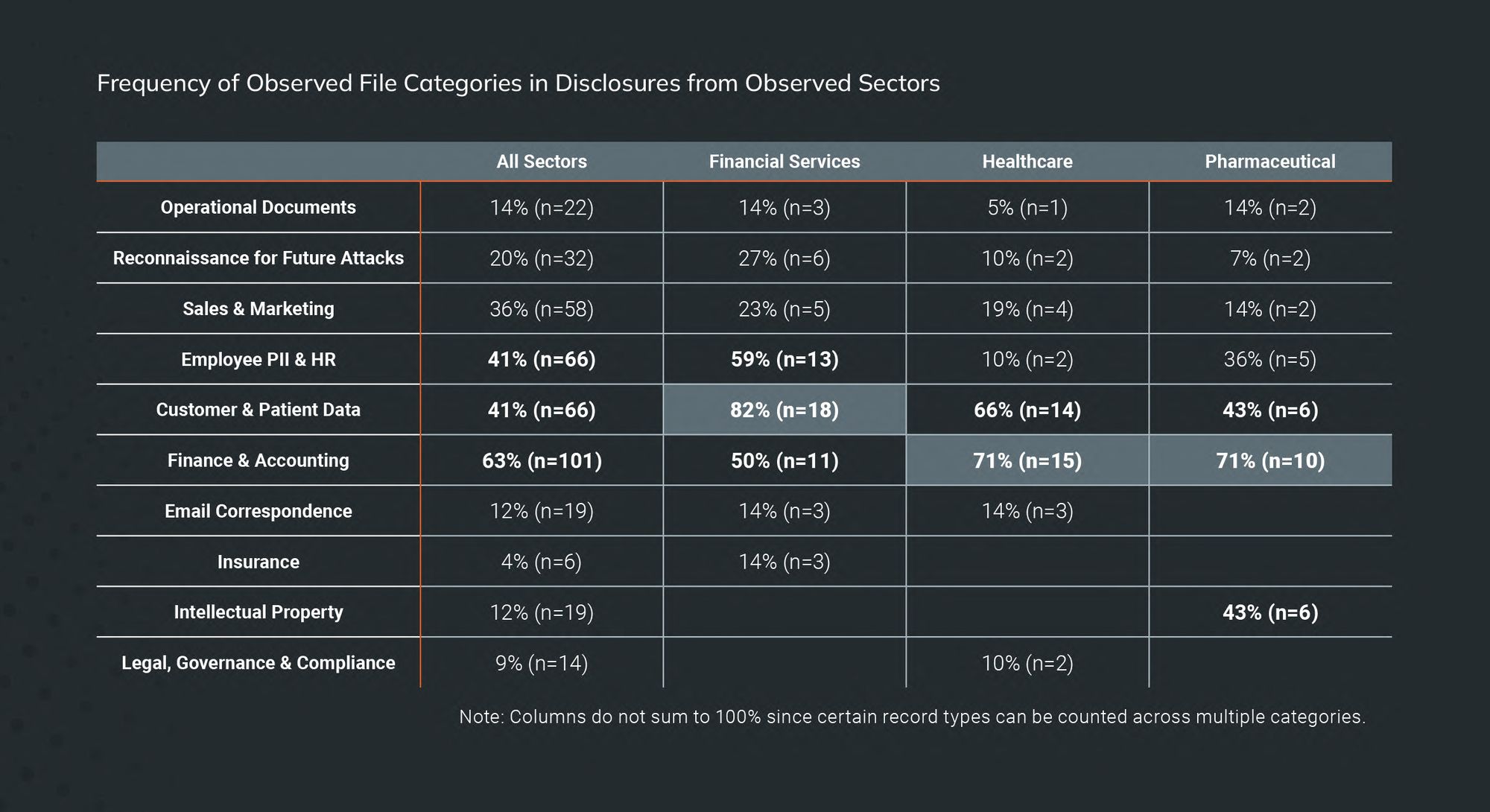Last updated at Tue, 28 Jun 2022 18:00:00 GMT
Welcome to the second installment in our series looking at the latest ransomware research from Rapid7. Two weeks ago, we launched "Pain Points: Ransomware Data Disclosure Trends", our first-of-its-kind look into the practice of double extortion, what kinds of data get disclosed, and how the ransomware “market" has shifted in the two years since double extortion became a particularly nasty evolution to the practice.
Today, we're going to talk a little more about the healthcare and pharmaceutical industry data and analysis from the report, highlighting how these two industries differ from some of the other hardest-hit industries and how they relate to each other (or don't in some cases).
But first, let's recap what "Pain Points" is actually analyzing. Rapid7's threat intelligence platform (TIP) scans the clear, deep, and dark web for data on threats and operationalizes that data automatically with our Threat Command product. This means we have at our disposal large amounts of data pertaining to ransomware double extortion that we were able to analyze to determine some interesting trends like never before. Check out the full paper for more detail, and view some well redacted real-world examples of data breaches while you're at it.
For healthcare and pharma, the risks are heightened
When it comes to the healthcare and pharmaceutical industries, there are some notable similarities that set them apart from other verticals. For instance, internal finance and accounting files showed up most often in initial ransomware data disclosures for healthcare and pharma than for any other industry (71%), including financial services (where you would think financial information would be the most common).
After that, customer and patient data showed up more than 58% of the time — still very high, indicating that ransomware attackers value these data from these industries in particular. This is likely due to the relative amount of damage (legal and regulatory) these kinds of disclosures could have on such a highly regulated field (particularly healthcare).

All eyes on IP and patient data
Where the healthcare and pharmaceutical differed were in the prevalence of intellectual property (IP) disclosures. The healthcare industry focuses mostly on patients, so it makes sense that one of their biggest data disclosure areas would be personal information. But the pharma industry focuses much more on research and development than it does on the personal information of people. In pharma-related disclosures, IP made up 43% of all disclosures. Again, the predilection on the part of ransomware attackers to “hit 'em where it hurts the most" is on full display here.
Finally, different ransomware groups favor different types of data disclosures, as our data indicated. When it comes to the data most often disclosed from healthcare and pharma victims, REvil and Cl0p were the only who did it (10% and 20% respectively). For customer and patient data, REvil took the top spot with 55% of disclosures, with Darkside behind them at 50%. Conti and Cl0p followed with 42% and 40%, respectively.
So there you have it: When it comes to the healthcare and pharmaceutical industries, financial data, customer data, and intellectual property are the most frequently used data to impose double extortion on ransomware victims.
Ready to dive further into the data? Check out the full report.
Additional reading:
- New Report Shows What Data Is Most at Risk to (and Prized by) Ransomware Attackers
- Complimentary GartnerⓇ Report "How to Respond to the 2022 Cyberthreat Landscape": Ransomware Edition
- 3 Takeaways From the 2022 Verizon Data Breach Investigations Report
- A Year on from the Ransomware Task Force Report

